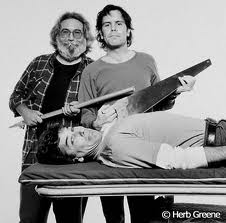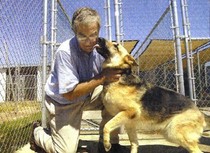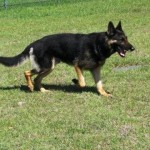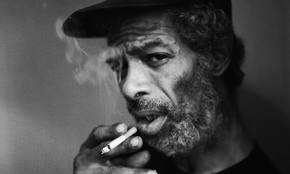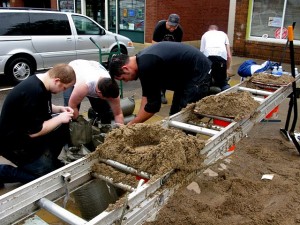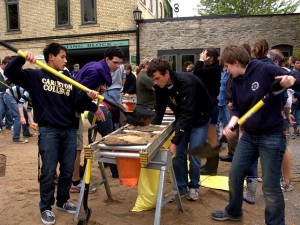Dale Rohlfing, D.C., drums up some good news!
July 28th, 2011
.
Hey, … Dale Rohlfing… wasn’t this guy at Fiesta Mexicana Wednesday night???
What’s this all about? Here’s Mickey Hart’s take on it, from his testimony before the Senate:
Rhythm as a tool for healing and health in the aging process
Senate Speech – Mickey Hart
Good morning. Thank you for inviting me to speak to you on an issue of great importance to me. This is the issue of how drumming, the rhythmic manipulation of sound, can be used for healing and health. I also would like to express my support for the concept of preventive, rather than crisis medicine,and specifically the role of music therapy as a means of maintaining mental, spiritual and physical health in people of all ages.
I am a professional percussionist. For over 40 years I have lived and played with rhythm; as an entertainer, as an author, and, always, as a student. Over the last ten years, I have spent much of my time exploring rhythm and it’s affect on the human body. Why is it so powerful and attractive? I have written on this subject in my books Drumming at the Edge of Magic and Planet Drum which try to address these questions. And yet I know that I have barely scratched the surface, particularly regarding the healing properties of rhythm and music.
Everything that exists in time has a rhythm and a pattern. Our bodies are multi-dimensional rhythm machines with everything pulsing in synchrony, from the digesting activity of our intestines to the firing of neurons in the brain. Within the body the main beat is laid down by the cardiovascular system, the heart and the lungs. The heart beats between sixty and eighty times per minute and the lungs fill and empty at about a quarter of that speed, all of which occurs at an unconscious level. As we age, however, these rhythms can fall out of synch. And then, suddenly, there is no more important or crucial issue than regaining that lost rhythm.
What is true for our own bodies is true almost everywhere we look. We are embedded within a rhythmical universe. Everywhere we see rhythm, patterns moving through time. It is there in the cycles of the seasons, in the migration of the birds and animals, in the fruiting and withering of plants, and in the birth, maturation and death of ourselves. Rhythm is at the very center of our lives. By acknowledging this fact and acting on it, our potential for preventing illness and maintaining mental, physical and spiritual well-being is far greater.
As a species, we love to play with rhythm. We deal with it every second of our lives, right to the end. When the rhythms stop, so do we. And this is where music becomes important. According to the late ethnomusicologist John Blacking, music is a mirror that reflects a culture’s deepest social and biological rhythms. It is an externalization of the pulses that remain hidden beneath the busy-ness of daily life. Blacking believed that a large part of music’s power and pleasure comes from it’s ability to reconnect us with the deeper rhythms that we are not conscious of. And it is the connection with these rhythms that gives music the power to heal.
Music as humanly organized sound or vibration has played a pivotal role in the development of our species, beginning with toolmaking. The tool record- all those delicately chipped arrowheads and choppers- is a dramatic illustration of our battle to master the subtle body rhythms that any advanced civilization requires to survive. In order to create the tools that allowed us to move forward as a species, we learned to scrape, strike, rub, shake and swing in rhythm. From there, we gathered in groups to sing our songs, to tell our stories, to dance our dances, all in rhythm. We found that by gathering together in this way, it reinforced our sense of community and family. The natural extension was the use of rhythm, and specifically percussion instruments, in healing ceremonies by traditional medical practitioners.
As modern technology takes us further and further from our natural rhythms, the use of percussion for healing has greater potential than ever. Today, without thoroughly understanding it, thousands of people across the country have turned to drumming as a form of practice like prayer, meditation or the martial arts. It is a practice that is widely acknowledged to help focus attention and to help people break free of the boredom and stress of daily life. More importantly, drumming is a way of approaching and playing with the deeper mysteries of rhythm.
Typically, people gather to drum in drum “circles” with others from the surrounding community. The drum circle offers equality because there is no head or tail. It includes people of all ages. The main objective is to share rhythm and get in tune with each other and themselves. To form a group consciousness. To entrain and resonate. By entrainment, I mean that a new voice, a collective voice, emerges from the group as they drum together.
The drummers each bring their own instruments and drum together for about a half hour. Afterward there is a discussion of issues of importance to the group. The drumming helps to facilitate this discussion because as they drum the group forms a common bond. From groups of women drummers, to twelve step groups like alchoholics anonymous to gatherings of men who are part of the ever-growing men’s movement, drumming is used to open up channels of communication and foster community and family. While some drum groups form around a particular issue, others have no agenda whatsoever, except to allow the members an opportunity to come together, play their instruments and share rhythm.
Older Americans are largely unfamiliar with this movement and yet these are the people who could benefit the most. The formation of drum circles among the elderly should be an integral part of any music therapy program. There is a large and enthusiastic group of drummers who could be called upon to lead workshops and make instructional videos to be distributed among the older population now isolated in nursing homes and retirement communities. It would be emphasized that the object is not public performance. Because, when we speak of this type of drumming, we are speaking of a deeper realm in which there is no better or worse, no modern or primitive, no distinctions at all, but rather an almost organic compulsion to translate the emotional fact of being alive into sound, into rhythm, into something you can dance to. Through drum circles, the aging population could tap into this realm, into these rhythms. The benefits would be wide-ranging.
First, there would be an immediate reduction in feelings of lonliness and alienation through interaction with each other and heightened contact with the outside world. While today many older people spend hours each day sitting in front of the television, drumming is an activity which would allow them direct exposure to younger people from the outside community. Whereas verbal communication can often be difficult among the generations, and in the sickly, in the drum circle non-verbal communication is the means of relating. Natural by-products of this are increased self-esteem and the resulting sense of empowerment, creativity and enhanced ability to focus the mind. Not to mention just plain fun. This leads to a reduction in stress, while involving the body in a non-jarring, safe form of exercise that invigorates, energizes and centers.
There is no question of the substantial benefits which could be derived from increased funding for the study and research of music therapy. This funding is critical to explore the most effective ways to utilize the techniques described here and by the other speakers. Billions of dollars are spent each year for crisis care, while little energy is spent trying to figure out how to avoid the crisis to begin with. A shift from crisis to preventive medicine needs to occur. The introduction of drum circles and percussion instruments into the older American population is a new medicine for a new culture. It was a good idea 10,000 years ago, and it is a good idea today.
Camp Wolfgang’s founder Wally Swanson has died
June 30th, 2011
(photo fair use from examiner.com)
8 German Shepherds need homes…
Wally Swanson, the founder of Camp Wolfgang, a German Shepherd rescue, died last week. Services were held today, in Minnesota! He closed down Camp Wolfgang in October of 2009, and after that, keeping only a few dogs as health issues made it difficult for him to keep up. When I first learned of Camp Wolfgang, there were over 300 dogs he was caring for, and I’d thought that when Ken and Krie died, I’d get a dog from Camp Wolfgang, but he closed it before then. The GSD rescue world was scrambling when he shut down working to accommodate over 120 GSDs and other dogs, but they did it, all the dogs who needed homes were adopted out or sent to rescues across the country.
He also founded a program called “Paws in Prison” where local prisoners worked with dogs, training the dogs for future adopters (and training themselves in the process). Here’s a blog post about a 2007 Paws in Prison graduation:
In the STrib:
Wallace Martin Swanson
Gil Scott-Heron dead at a high-mileage 62
May 30th, 2011
Gil Scott Heron died at 62, the end of a tortured and torturous life, he was one of the few speaking out, standing up…
On Gil Scott-Heron, prelude to a performance at the Dakota last year, and “Gil,” warns his road manager, Danielle Beckom, “is not good with schedules.”
From City Pages:
By Rick Mason Wednesday, Mar 24 2010
Often called the Godfather of Rap these days, Gil Scott-Heron in fact emerged as a fiercely eloquent voice from the urban wilderness in the early 1970s, mercilessly skewering political and social forces that had disenfranchised huge swaths of the population and were leading the world down a treacherous path. A writer first and an admirer of Langston Hughes, Scott-Heron eventually fused his own poetry with a potent dose of jazz laced with blues and R&B, railing against complacent media, an oblivious mainstream America, runaway consumerism, racism, venal politicians, and drug abuse. Pieces like “The Revolution Will Not Be Televised,” “Winter in America,” “Johannesburg,” and “Home Is Where the Hatred Is” hit like lightning bolts, both electrifying and enlightening. The rise of hip hop was clearly indebted to Scott-Heron, who has been sampled and referenced by the likes of Kanye West and Common. Silent for a decade and a half—during which he reportedly battled health, addiction, financial, and legal problems—Scott-Heron, 60, recently re-emerged with I’m New Here, a stark, riveting portrait of the artist as weathered scribe, more personally analytical than of the wayward world that once drew his searing scrutiny. In place of jazz is hard-edged post-industrial blues laced with ragged beats as he covers Robert Johnson’s “Me and the Devil,” Bobby Blue Bland’s “I’ll Take Care of You,” and Smog, in the title track’s tale of arid alienation. It’s like hearing a voice from the other side of the apocalypse, but unmistakably that of a survivor.
South Africa, U.S. tunes from way back, became the theme today for me as I listened to Gil Scott-Heron, I’d seen him decades ago… a riveting show… the Guthrie, early 80s??? He was a staple in our album collection at KFAI. In Paul Hipp’s Bachmann McCarthy Overdrive “What’s the word? TINKLENBERG!” seemed like a good riff off of Scott-Heron’s Jo’burg. In the CapX 2020 Hampton-LaCrosse docket there’s a conslutant from Biko Associates, which reminds me of that era, everytime I look at his testimony, my tape loop starts.
Here’s Gil doing Johannesburg:
And another earlier version, 1976:
… and speaking of Jo’burg, then there’s the Biko song that keeps going through my brain whenever I read William P. Smith’s testimony in the Hampton-LaCrosse case — what’s his tie?
“People must not just give in to the hardship of life. People must develop a hope. People must develop some form of security to be together to look at their problems, and people must, in this way, build up their community.”
-Stephen Bantu Biko
So on that theme, Peter Gabriel on one of the Amnesty International tours, best version I could find:
Today – ON WISCONSIN!
February 26th, 2011
100,000 today fiercely standing up in a gentle snow!
From One Wisconsin:
And another claiming 120,000 strong:
Northfield flood and clean-up
September 26th, 2010
Hot off the press… er… just in on the wire… errrr, wireless!
northfield.org has a great overview!
Cannon River flood news roundups and updates
And the missive hot off the press?
Cleanup is ongoing in Northfield today
Looking Forward: Volunteers Needed!
If you are willing to be called on to help with the clean up effort in the next 2 to 4 weeks, please register to help at http://northfield.org/flood . You will be contacted to help out as needed.
Check this out, I’ve not seen this before in any of the million photos of flood sandbagging, look at this utterly brilliant ladder and cone sandbag technique– only in Northfield (photos stolen from Griff – Fair Use and Full Attribution!!!):
